I’m David. The Sunday Sip, is a weekly newsletter about my life and experiences in a rural village in North-West Bosnia and Herzegovina. I’ll be giving you a unique look, through the eyes of an immigrant (me), of this much misunderstood country. My goal is to replace the many negative perceptions of both the country and its people, that you’ll be served by international media outlets. Thank you so much for dropping by.
This past week, my brother Trevor visited us from the UK. Although it was a very short visit we wanted to show him some more of our local area and so introduced to him to the Kozara National Park.
We can see the parks foothills from our front door in the village.
So, I thought that in this edition of “The Sunday Sip”, I would introduce you as well 😀
The Monument That Speaks Without Words
Tucked away in the pine forests of the Kozara National Park in northwestern Bosnia and Herzegovina, is a monument that doesn’t need plaques or loud statements to make its point. The Kozara Spomenik, or to give it its full title, the Monument to the Revolution, stands quietly, solemnly, but unmistakably, on the landscape.
Designed by Yugoslav sculptor Dušan Džamonja and unveiled in 1972, this towering concrete form might seem abstract at first glance. But for me, it’s easily my favourite of the many spomeniks scattered across the former Yugoslavia.
What’s in a Shape?
From afar, the monument looks almost alien, a 33-metre-high column, flared and ridged like a concrete turbine. But step closer and you’ll find yourself surrounded by curves, shadows, and the subtle play of light on the brutalistic raw material.
These radial protrusions have been interpreted in so many ways: as rising flames of revolution, spent bullet casings, or even outstretched arms shielding the land and its people.
The form is intentionally non-literal. It doesn’t show faces or names, instead, evoking feeling, resilience, and defiance.
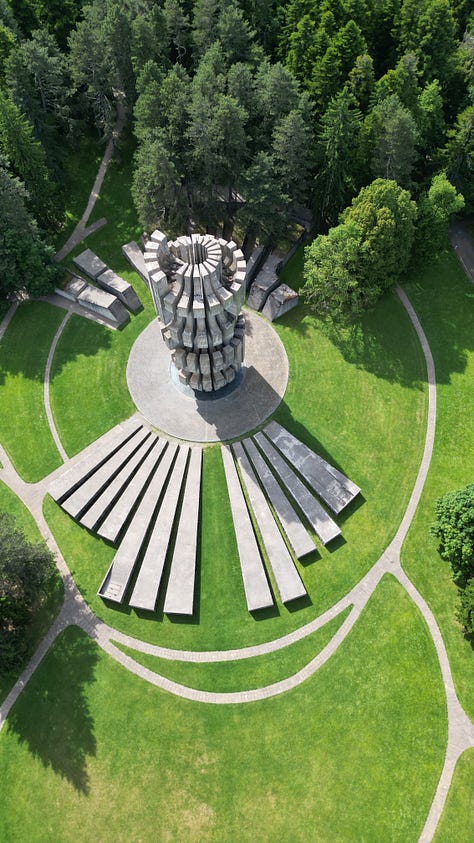
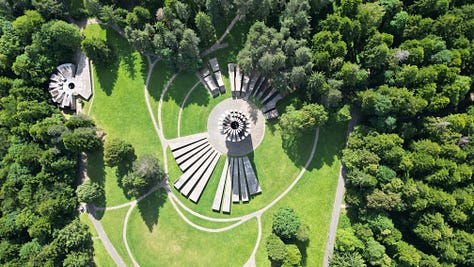
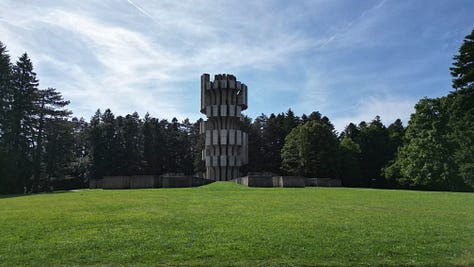
The Battle That Echoes
The monument commemorates the Battle of Kozara in 1942, one of the fiercest confrontations between Yugoslav Partisans and Axis forces.
This wasn’t just a military conflict however, it was a massacre, with thousands of civilians from the surrounding area caught in the crossfire, deported to camps, or killed.
The Kozara region became a symbol of resistance and martyrdom, especially during the socialist Yugoslav period. And while politics and borders have shifted since then, this monument still stands, both weathered, but strong.
Kozara (the film linked above and with English sub titles) is recognised for its realistic portrayal of the Partisan struggle and its emphasis on collective heroism over individual exploits. It set a precedent for subsequent Yugoslav war films, including Battle of Neretva (1969). The film remains a poignant reminder of the sacrifices made during World War II and holds a significant place in the history of Yugoslav cinema
Modernism With a Message
During Yugoslavia’s socialist years, monuments like this were designed not just to remember the past, but to shape national identity and promote unity across ethnic lines. Today, it feels like both a relic of a different time and a reminder of values, like solidarity and sacrifice, that still resonate.
If You’re Ever in the Area…
The Kozara National Park itself is stunning, especially in the early morning mist. The spomenik is just a short walk through the woods from the main park entrance, and there’s a small museum nearby that provides more context. But honestly? Even without the backstory, the monument feels important. Go, stand beside it, look up, and just listen.
Exploring Spomeniks.
In this episode, I discuss the brutalist Spomenik monuments of the former Yugoslavia with Donald Niebel - founder of the Spomenik Database.
Thank You for Being Here
If you’ve read this far, thank you. Your support means the world to me, whether it’s a comment, a subscription, or just taking the time to read what I share.
If you’re interested in supporting me but not through a paid Substack Subscription, Check out Buy Me a Coffee.
And, I’d be thrilled if you’d check out my recently launched YouTube channel. It’s not about chasing numbers anymore; it’s about connecting with people who get it, who understand the joys and challenges of this phase of life, that I find myself in (over 70).
Until next week.
Videmo se opet (I’ll see you again soon).
David.


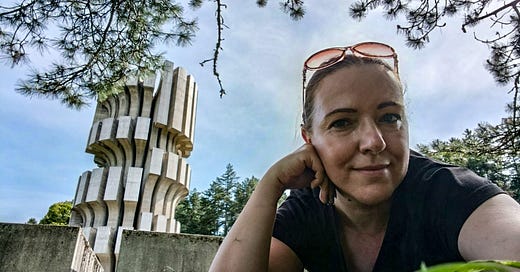



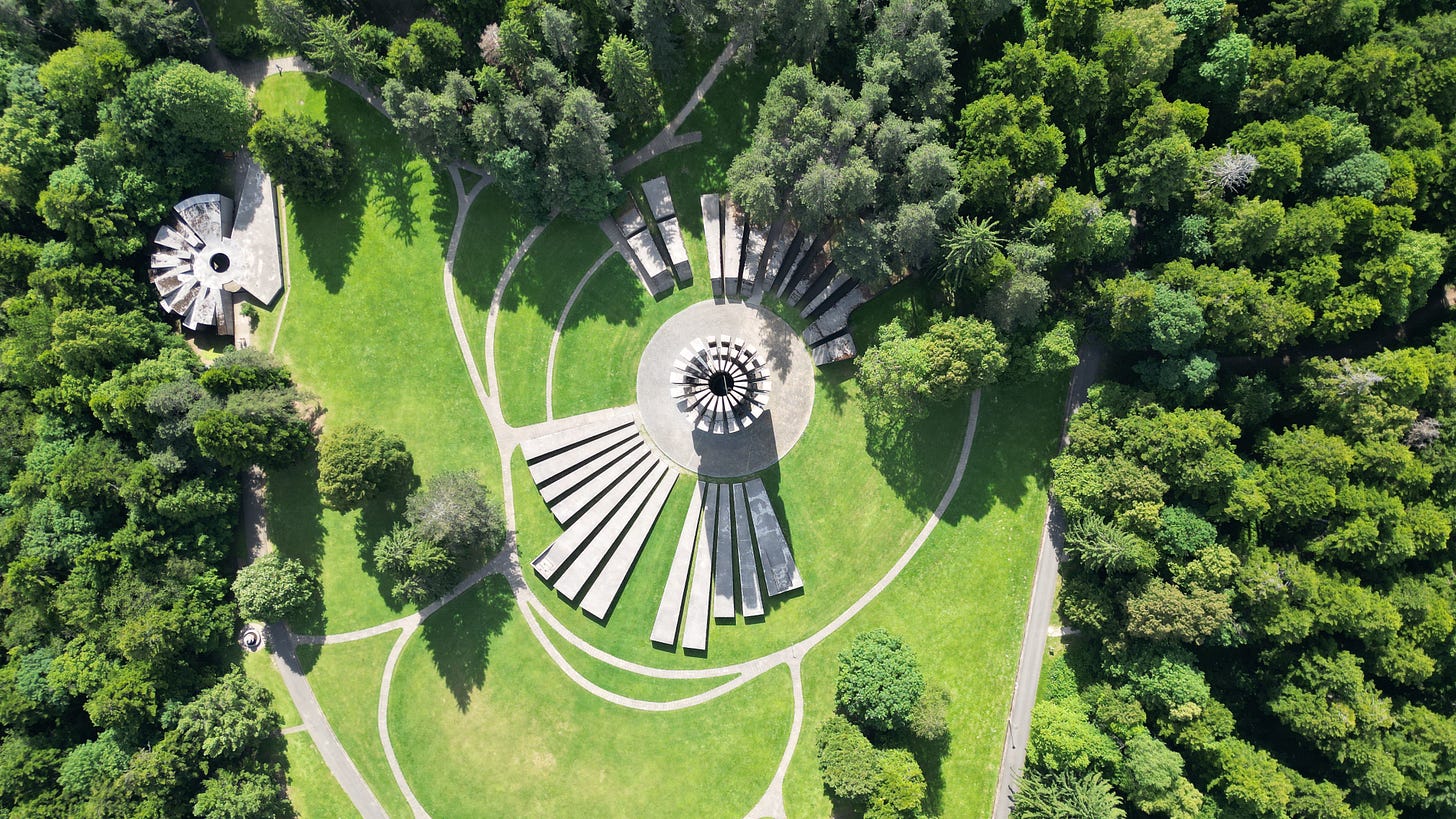

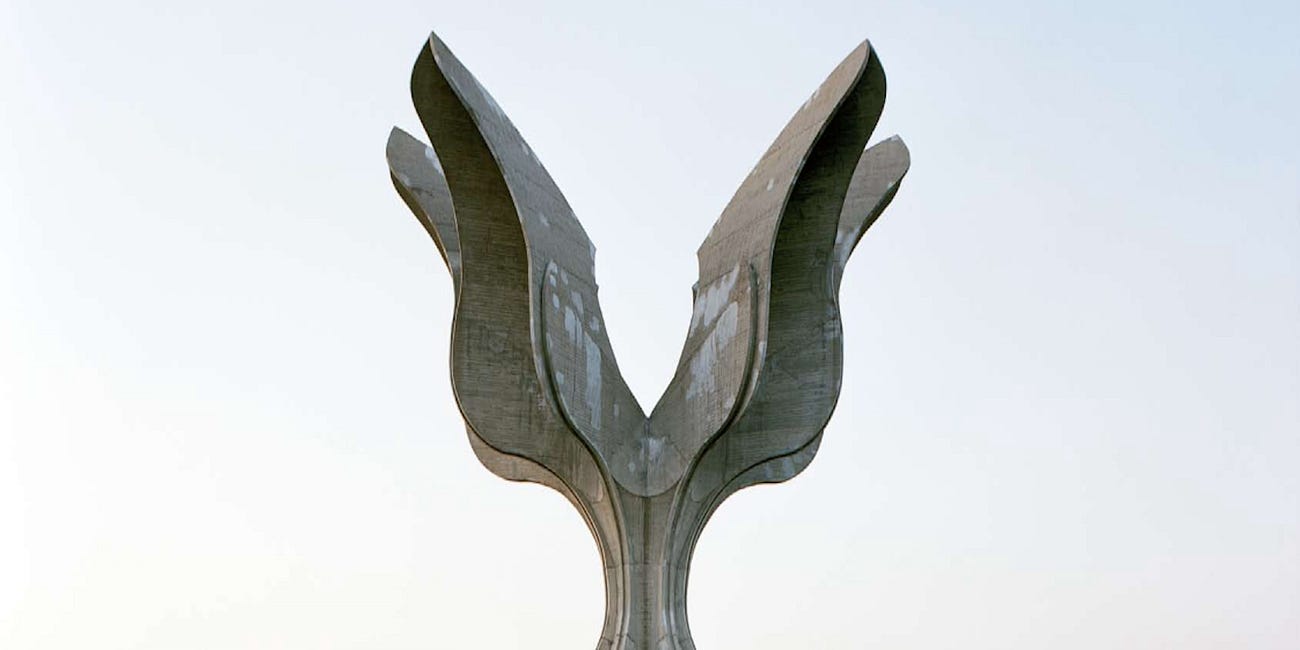
Your drone flying really bought it all to life thanks
The spominiki are fascinating. And this one does look arresting, especially in the midst of a national park.